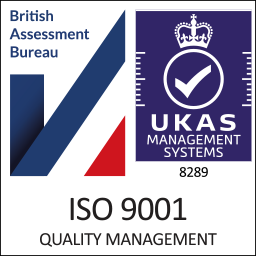For larger businesses, the timing of your sale is key. You may also benefit from structuring the sale to spread gains over multiple tax years to reduce the impact.

Recent changes to Capital Gains Tax (CGT) in the UK, introduced in the Autumn Budget 2024, bring significant updates for business owners looking to sell or exit. With new tax rates on the horizon, the timing and structure of your sale could make a big difference to the net amount you walk away with. Whether you are a small business owner or managing a higher-value company, understanding these changes is essential. Here is a breakdown of what is changing, how it could impact you, and how to make the most of the available tax reliefs.
Key Changes to CGT Rates on Business Sales
The new CGT rates don’t apply across the board; they are particularly focused on larger gains from the sale of business assets. They will also affect two common reliefs that reduce CGT, this being the Business Asset Disposal Relief (BADR) and Investors’ Relief.
We will now explore how these changes could impact you based on the value of your business.
For Businesses Valued Under £1 Million
If you are selling a business valued under £1 million, you may already qualify for the reduced CGT rate under Business Asset Disposal Relief (BADR), where the gain on your sale is taxed at 10% rather than the standard CGT rate. However, this rate will soon increase:
- Currently: The rate on qualifying sales remains at 10%.
- From April 2025: The rate increases to 14%.
- From April 2026: The rate will rise again to 18%.
Example: If you sell a business valued at £800,000 today, you might pay £80,000 in CGT at the 10% rate under BADR. However, if you wait until after April 2025, the same sale will incur a tax bill of £112,000 at the new 14% rate. If you wait until 2026, it would be £144,000 at the 18% rate.
These changes mean it could be financially beneficial to accelerate your sale before April 2025 to capture the lower rate.
For Businesses Valued Over £1 Million
If your business is valued over £1 million, the recent CGT changes mean that selling will now have a more significant financial impact due to the higher rates that have come into effect immediately.
- Higher CGT Rates on Gains Above £1 Million: If you sell a business for more than £1 million, any profit over that amount will be taxed at higher rates. Starting immediately, the tax rate for gains over £1 million is increasing from 20% to 24% for higher-rate taxpayers. However, the first £1 million of gains still qualifies for the 10% reduced tax rate under BADR.
Example: If you sell a business for £1.5 million today and qualify for BADR, the first £1 million of gain would be taxed at the 10% BADR rate, resulting in £100,000 in CGT. The remaining £500,000 would be taxed at the new standard 24% rate, adding another £120,000 in CGT, for a total tax liability of £220,000. Under the previous 20% rate, that £500,000 would have incurred only £100,000 in CGT, meaning the recent change has increased your tax bill by £20,000.
Please be aware that this adjustment is effective immediately for all sales completed after October 30, 2024. As above, the BADR rate of 10% will remain in effect until April 2025, after which it is set to increase to 14%, then rise again to 18% from April 2026. This means that while the initial £1 million can currently be claimed at the 10% rate, this favourable rate will increase over the next two years, adding further financial considerations.
For larger businesses, the timing of your sale is key. You may also benefit from structuring the sale to spread gains over multiple tax years to reduce the impact.
Investors’ Relief – What’s Changing?
Investors’ Relief is another beneficial tax break, designed for individuals who invest in unlisted (private) companies and hold their shares for a minimum period. Like BADR, Investors’ Relief also allows a reduced CGT rate but on a higher lifetime limit of up to £10 million.
- Current Rate: Investors’ Relief applies a 10% rate on gains, capped at a £10 million lifetime limit.
- New Rates: From April 2025, this rate will increase to 14%, then to 18% in April 2026.
Example: Suppose you’re an investor who purchased shares in a private company and your gain on sale is £5 million. Under the current 10% rate, you’d pay £500,000 in CGT. If you hold the shares and sell after April 2025, the tax owed would increase to £700,000 at the 14% rate. Waiting until after April 2026 would mean paying £900,000 at the 18% rate – a considerable difference for the same gain.
Timing and Strategic Planning are Now Critical
These phased increases create opportunities to save significantly by selling before the rates rise. For instance, if you’re thinking of selling a company valued under £1 million, completing the transaction before April 2025 allows you to secure the current 10% rate, saving you potentially tens of thousands in CGT.
How HF Can Help
At HF, our corporate and commercial law team specialises in supporting business owners through the sale process, ensuring that all potential CGT reliefs are used effectively. Our experience in structuring sales, handling mergers and acquisitions, and navigating complex tax changes means we can help you create an exit strategy that minimises tax impact and maximises your net proceeds.
If you are considering selling your business and want to ensure your tax strategy aligns with these latest CGT changes, reach out to us on angelika.jankowska@h-f.co.uk or peter.millican@h-f.co.uk. We are here to help you achieve the best possible outcome for your business exit under the new tax landscape.
Related Insights

Scoring Big: Lessons From Manchester United’s Latest Acquisition By Sir Jim Ratcliffe
In recent years, the world of football has undergone a major shift, not just on the field but behind the...




